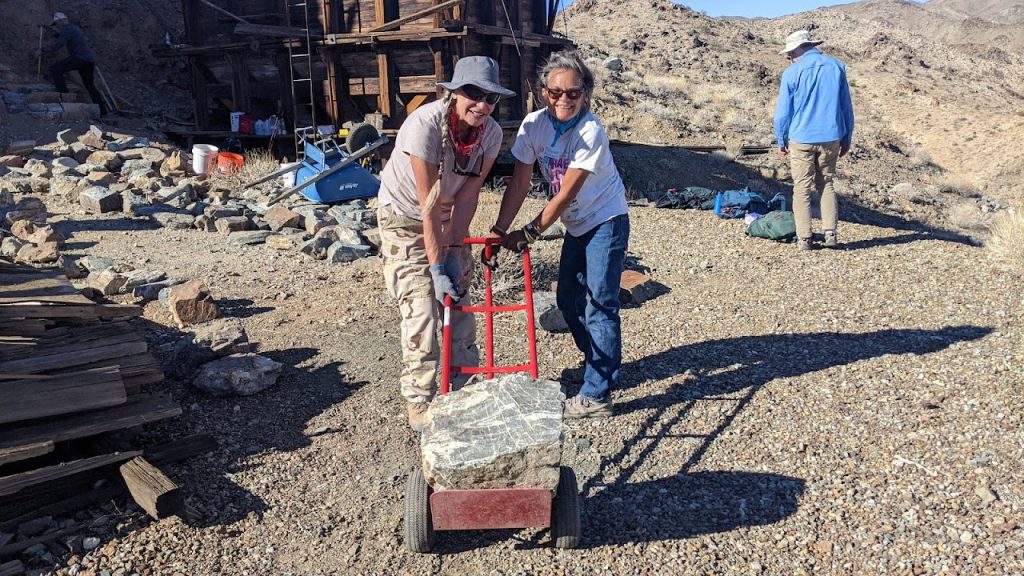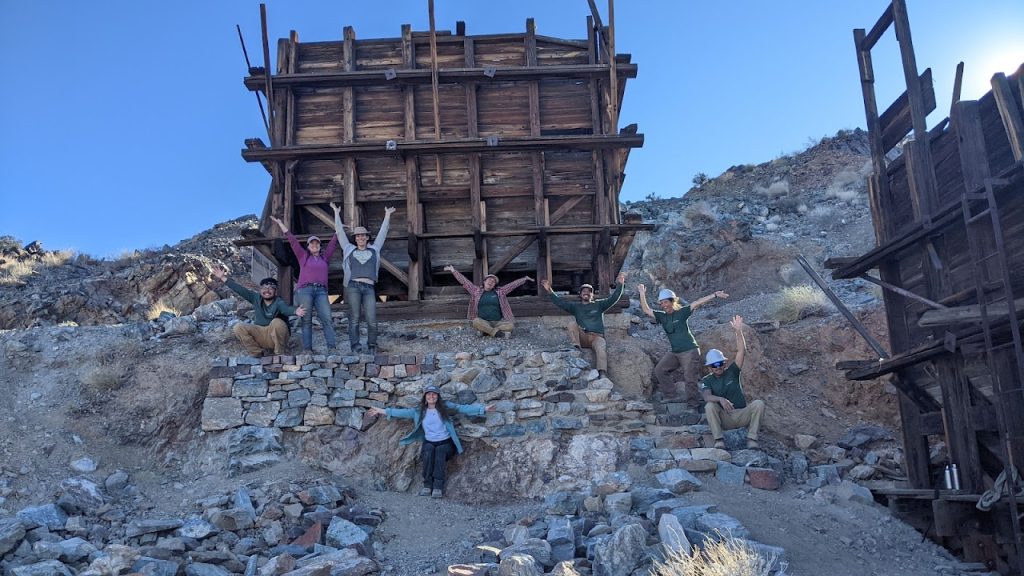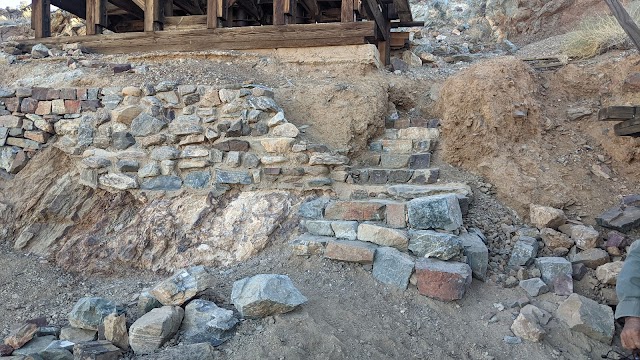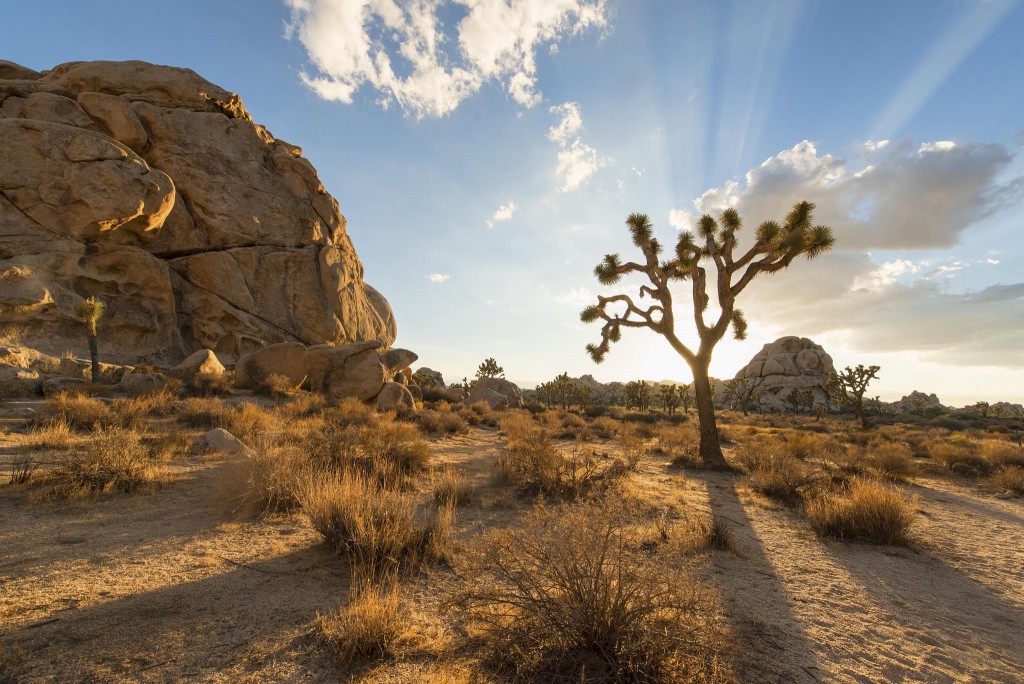
- This event has passed.
HistoriCorps Volunteer Project: Silver Bell Ore Bins
November 6, 2022 @ 5:00 pm - November 11, 2022 @ 12:00 pm
FreePROJECT PARTNER: Joshua Tree National Park
SESSION DATES: November 6-11 and November 13-18
PROJECT SUPERVISOR: Alan Ash
CREW LEADER: TBD!
Project Site Description & History
The uniquely beautiful Joshua Tree National Park has been inhabited for at least 5,000 years. The National Park Service recognizes the Pinto Culture as the first group to have lived in the area, but other Indigenous cultures including the Cahuilla, Chemehuevi, and Serrano peoples called this area home at different points in history. HistoriCorps is thrilled to return to this site!
Cattleman and miners arrived in the region in the 1800s, seeking to take advantage of the then-abundant natural resources: lush grass and gold were notable draws. Roughly one hundred years later, homesteaders moved in, and they further altered the landscape through building cabins, digging wells, and planting crops.
In 1936, not too long after folks started staking claims here for homesteads, Joshua Tree was established as a National Park. Park advocate and one-time southern belle Minerva Hoyt worked tirelessly to ensure the park’s protection. Though she didn’t achieve the same level of recognition for her impact on Joshua Tree that luminaries such as John Muir and Ferdinand Hadyen did for their work to preserve Yosemite and Yellowstone, respectively, without Minerva Hoyt, Joshua Tree may not have achieved National Park status. Joshua Tree is especially unique because it contains two distinct desert ecosystems, the Mojave and the Colorado, and is home to the iconic tree that give the park its name.
The Silver Bell Ore Bins site shares history with the miners and homesteaders that lived here. Our partner shares, “The Silver Bell Ore Bins (aka tipples) are adjacent to the Silver Bell Mine. The mine operated as a surface mine from ca. 1934 to 1962. Gold and silver were extracted in the early years of mine production, later shifting to lead and copper via surface mining. The ore bins were constructed sometime after 1956, representing post-WWII mining activity which was limited within the park boundaries. Other original mine features and equipment were salvaged for reuse after the mine ceased operations, however, terracing and the road access are still present. The mine site is within the Hexie Mountains Historic Mining District with a period of significance from 1934 to 1942. Many other mine sites within the district can be viewed from the Silver Bell site.” Learn more about the park’s ecology, its history, and its namesake tree from the National Park Service.




Location and Logistics
SESSION DATES: November 6-11 and November 13-18. Please plan to arrive at the campsite no earlier than 5pm and no later than 7pm on the first day of your session.
LOCATION: We will be camping at Queen Valley Administrative Campground! Maps and directions will be included in the pre-arrival packet.
Tents and campervans or truck campers can access this campsite. It can get very windy at the campsite, so sturdy tents and good stakes are a must. RVs/trailers are not permitted on this site. Dogs are not permitted.
WEATHER: Anticipate highs in the 60s and lows in the 40s. Weather conditions may be rainy, cloudy, or sunny. Volunteers are responsible for checking weather conditions before their session begins, and packing appropriately.
ABOUT VOLUNTEERING: HistoriCorps projects are free for volunteers! HistoriCorps will provide all meals, tools, training, equipment, and a campsite. Volunteers are responsible for their own transportation to the campsite, sleeping equipment, work gloves, clothes and boots, and other personal gear.
Scope of Work
HistoriCorps is committed to educating and training volunteers in preservation skills, with an overarching mission of inspiring a preservation ethic in all those involved. Learning and working alongside expert HistoriCorps field staff, volunteers and applying the traditional skills necessary to restore Silver Bell Ore Bins.
Volunteers will hike to the project site daily. The trail is 1.5 miles round trip with approximately 320′ of elevation gain. Here’s a map. Volunteers will hike along historic mining access road and will encounter uneven rock, sand, and gravel surfaces. Expect to traverse through arroyo and hillside landscapes. Trekking poles are recommended.
Once at the project site, volunteers will be moving earth, rock, and concrete, working on a steep slope, and working at an exposed site. If you like trail and masonry work, you will like this project! We will be teaming up with members of the Nevada Conservation Corps to complete the follow scope:
- Hiking to and from the job site – 20%
- Improve site drainage and trail conditions around the Ore Bins – 30%
- Reconstruct and extend a stone foundation wall below Ore Bin #1 – 40%
- Repoint a stone foundation wall below Ore Bin #2 – 10%
Please note: Tasks vary by day and by week, depending on a variety of factors including: weather, project priorities, previous groups’ work, and more. Though it is likely you will get to learn and practice most or all of the above tasks, it is not guaranteed. The higher percentage of the scope a particular task is, the more likely you will get to practice it.



